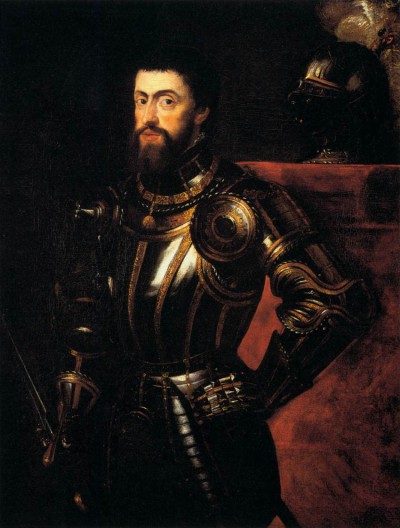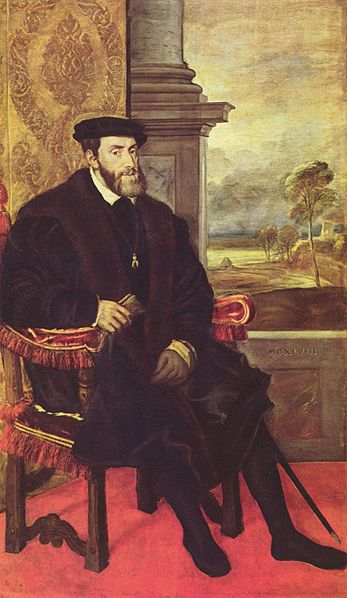Charles V, Holy Roman Emperor (Charles V, Holy Roman Emperor )

Charles I (Spanish: Carlos I) (24 February 1500 – 21 September 1558), of the Spanish Empire from 1516 and later, as Charles V (French: Charles Quint; German: Karl V.)[a] was ruler of the Holy Roman Empire from 1519 until his voluntary abdication in favor of his younger brother Ferdinand I as Holy Roman Emperor and his son Philip II as King of Spain in 1556. As King of Spain he became ruler of many greater and lesser European states, Charles was the heir of three of Europe’s leading dynasties, the House of Habsburg of the Habsburg Monarchy, the House of Valois-Burgundy of the Burgundian Netherlands, and the House of Trastámara of the Crowns of Castile and Aragon. From Spain he ruled over extensive domains in Central, Western, and Southern Europe, and the Spanish colonies in the Americas and Asia. As Charles was the first king to rule Castile, León, and Aragon simultaneously in his own right, he became the first King of Spain which was his primary title. In 1519, Charles became Holy Roman Emperor and Archduke of Austria. From that point forward, his empire spanned nearly four million square kilometers across Europe, the Far East, and the Americas. Much of Charles’s reign was devoted to the Italian Wars against France which, although enormously expensive, were militarily successful, and which led to the development of the first modern professional army in Europe, the Tercios. Charles’s forces re-captured both Milan and Franche-Comté from France after the decisive Spanish victory at the Battle of Pavia in 1525, which pushed Francis I of France to form the Franco-Ottoman alliance. Charles’s rival Suleiman the Magnificent conquered the central part of the Hungarian Kingdom in 1526 after defeating the Hungarians at the Battle of Mohács. However, the Ottoman advance was halted by the Spanish musketeers after they failed to capture Vienna in 1529.
Aside from his military endeavors, Charles is best known for his role in opposing the Protestant Reformation.[6] Several German princes abandoned the Catholic Church and formed the Schmalkaldic League in order to challenge Charles’s authority with military force. Unwilling to allow the wars of religion to come to his other domains, Charles pushed for the convocation of the Council of Trent, which began the Counter-Reformation. The Society of Jesus was established by St. Ignatius of Loyola during Charles’s reign in order to peacefully and intellectually combat Protestantism, and continental Spain was spared from religious conflict largely by Charles’s nonviolent measures according to some authors. In the New World, Spain conquered the Aztecs of Mexico and Incas of Peru, then extended its control across much of South and Central America. Charles oversaw the Spanish colonization of the Americas. Charles provided five ships to Ferdinand Magellan whose voyage – the first circumnavigation of the Earth – laid the foundation for the Pacific oceanic empire of Spain and began Spanish conquest of the Philippines. Though always at war, Charles was a lover of peace. “Not greedy of territory,” wrote Marcantonio Contarini in 1536, “but most greedy of peace and quiet.” Charles abdicated in 1556. The Habsburg Monarchy passed to Charles’s younger brother Ferdinand, whereas the Spanish Empire was inherited by his son Philip II. The two empires would remain allies until the 18th century. Charles was only 56 when he abdicated, but after 34 years of energetic rule he was physically exhausted and sought the peace of a monastery where he died aged 58.
Born
- February, 24, 1500
- Belgium
- Ghent, Flanders
Died
- September, 21, 1558
- Spain
- Yuste, Extremadura
Cause of Death
- malaria
Cemetery
- Monastery of San Lorenzo de El Escorial
- El Escorial, San Lorenzo de El Escorial
- Spain



